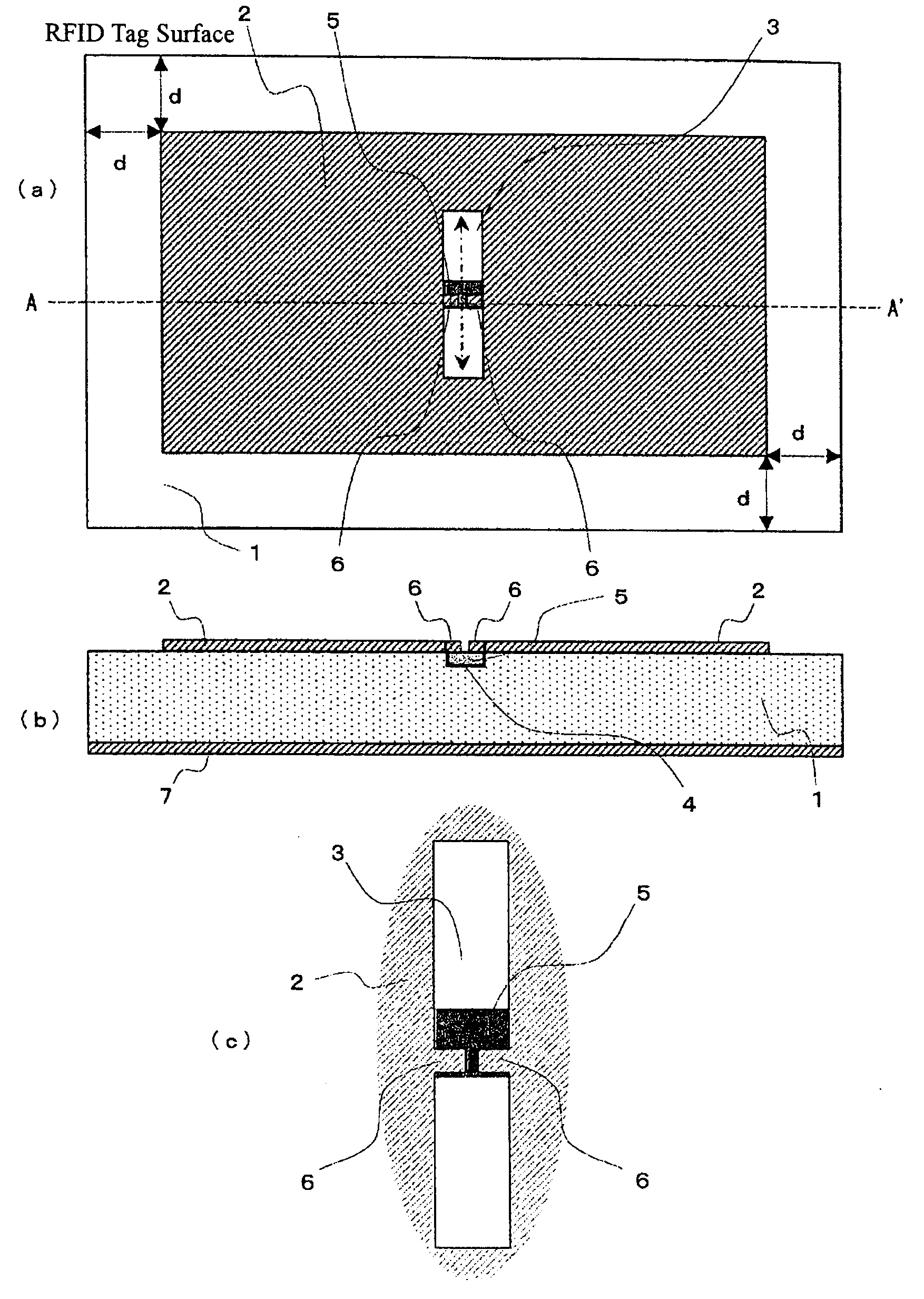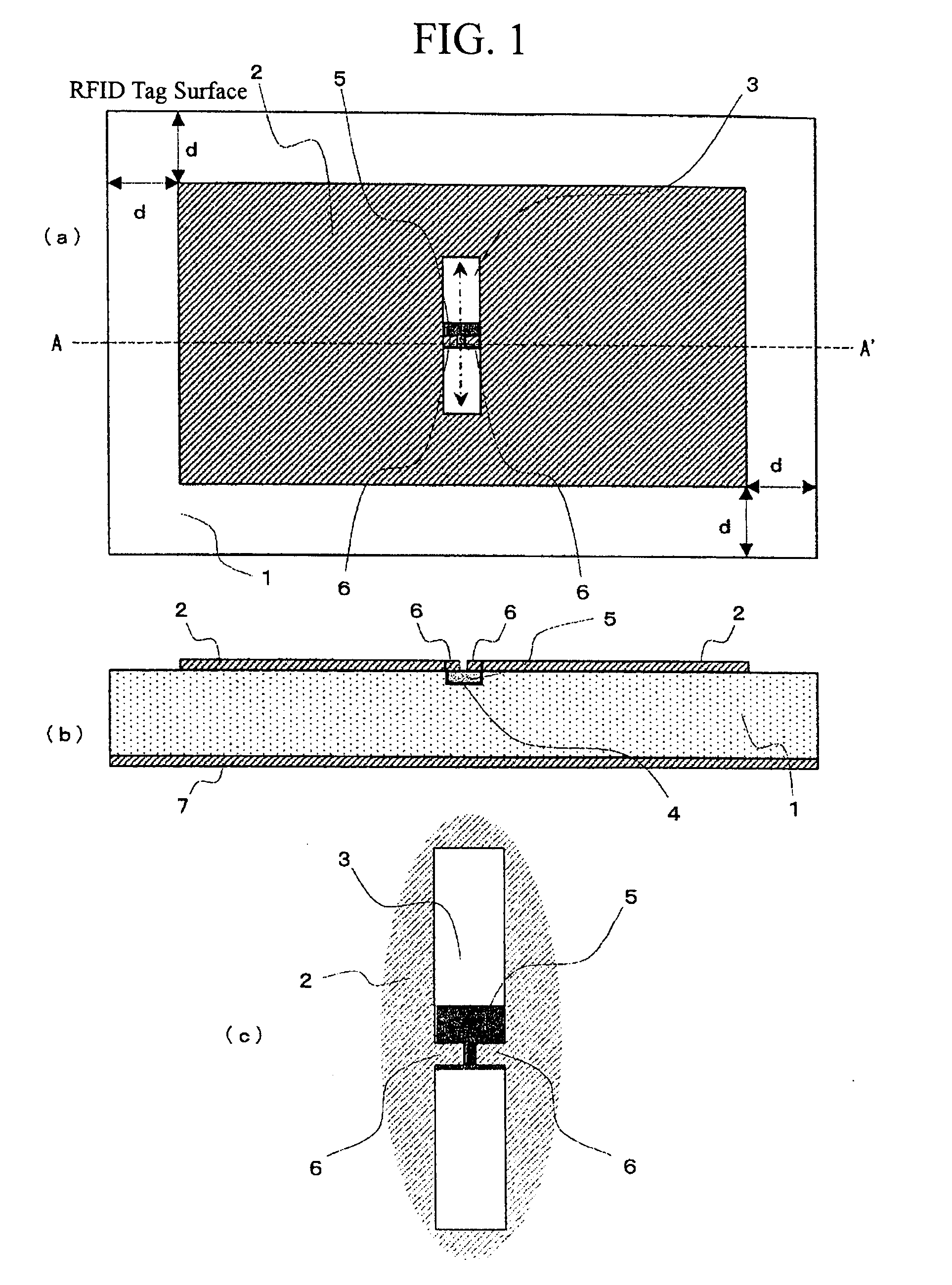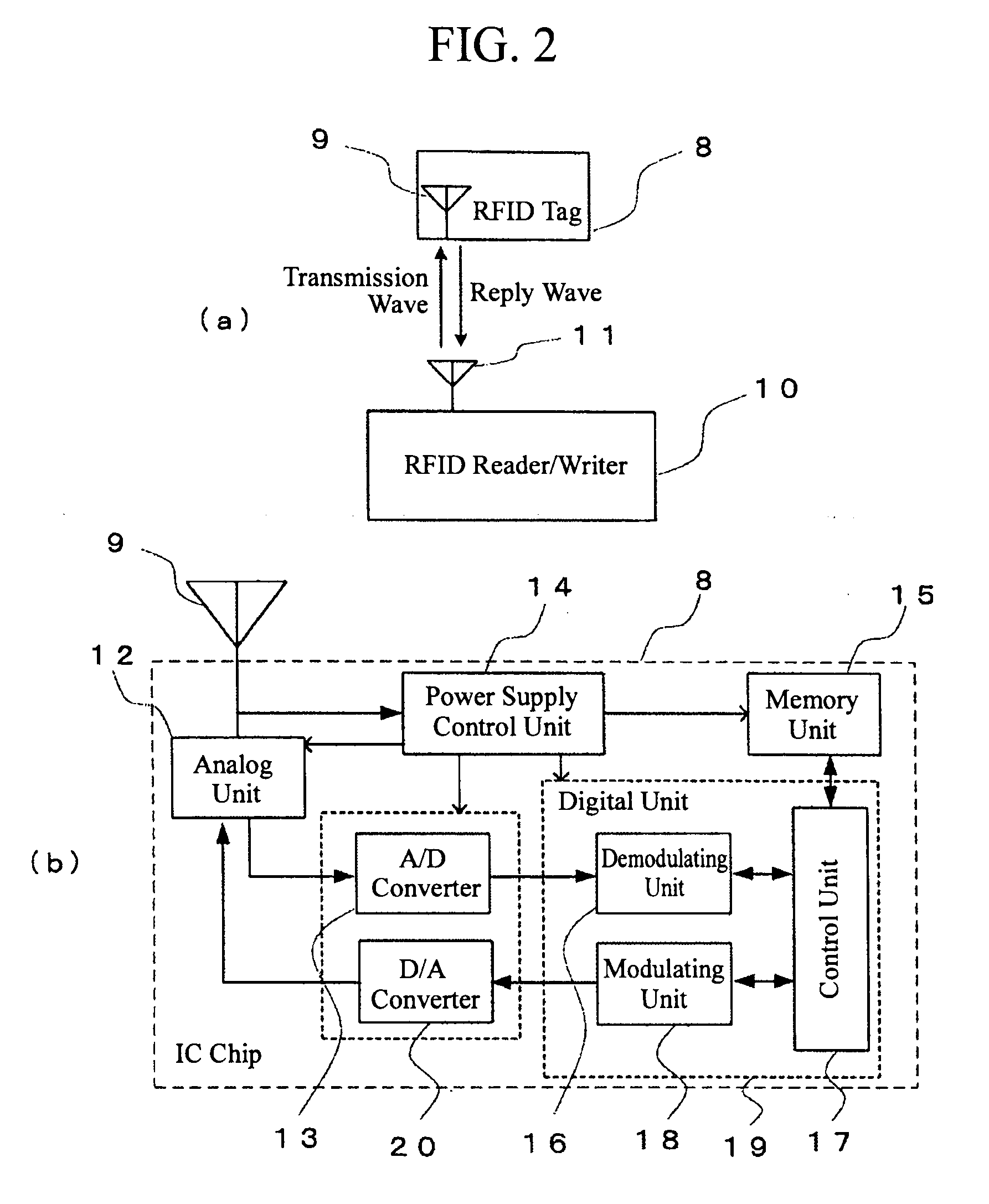RFID tag
a radio frequency identification and tag technology, applied in the field of rfid (radio frequency identification) tags, can solve the problems of increasing cost, complicated structure of rfid tags, and reducing the so as to prevent the shortened range in which rfid tags can carry out communications from being upsized , the effect of reducing the cross-polarization component and reducing the electric supply loss
- Summary
- Abstract
- Description
- Claims
- Application Information
AI Technical Summary
Benefits of technology
Problems solved by technology
Method used
Image
Examples
embodiment 1
[0086]Embodiment 1 of the present invention will be explained hereafter. FIG. 1 is a configuration diagram of an RFID tag in accordance with this Embodiment 1. FIG. 1(a) is a plan view of the RFID tag, FIG. 1(b) is a cross-sectional view taken along the A-A′ line shown in FIG. 1(a), and FIG. 1(c) is a plan view showing an enlarged part in a vicinity of a slot of the RFID tag shown in FIG. 1(a). In these figures FIGS. 1(a) to 1(c), a conductive pattern 2 is disposed on one main surface (a front surface) of a dielectric substrate 1. As shown in FIG. 1(a), the conductive pattern 2 is formed in an inner portion of the dielectric substrate 1 in such a way as to be at a distance d from each of vertical edges and horizontal edges of the dielectric substrate 1. As shown in FIG. 1(a), a long narrow slot 3 is formed in a central portion of the conductive pattern 2. This slot 3 can be formed by making the conductive pattern 2 be subjected to an etching process, a milling process, vapor deposit...
embodiment 2
[0099]Embodiment 2 of the present invention will be explained with reference to FIG. 7. FIG. 7 is a plan view showing the structure of an RFID tag in accordance with Embodiment 2, FIG. 7(a) is a plan view of the RFID tag, and FIG. 7(b) is a plan view showing an enlarged part in a vicinity of a slot of the RFID tag shown in FIG. 7(a). In the figures, the same reference numerals denote the same components or like components, and therefore the detailed explanation about them will be omitted hereafter. In Embodiment 1, the case in which the number of terminals (not shown) of the IC chip 5 is two, i.e., the IC chip having two legs is used is explained. In contrast, in this embodiment, an IC chip 5 having four terminals is mounted, and, in addition to electrical connecting portions 6 and 6 as explained in Embodiment 1, two dummy pads 23 and 23 are disposed inside the slot 3 in a vicinity of the electrical connecting portions 6 and 6. In a formation method of forming these dummy pads 23 an...
embodiment 3
[0100]Embodiment 3 of the present invention will be explained with reference to FIGS. 8 to 10. FIG. 8 is a configuration diagram showing the structure of an RFID tag in accordance with Embodiment 3, FIG. 8(a) is a plan view of the RFID tag, FIG. 8(b) is an enlarged view of a slot of the RFID tag in accordance with Embodiment 3, FIG. 9 is a configuration diagram showing the structure of an RFID tag in accordance with Embodiment 3, and FIG. 10 is a configuration diagram showing the structure of an RFID tag in accordance with Embodiment 3. In FIGS. 8 to 10, a taper-shaped slot 24 is formed in such a way as to widen along each of opposing directions of its length with distance from the position at which an IC chip 5 is placed, and an electric length adjusting unit 25 is formed in each of edge portions of a conductive pattern 2 in such a way as to be shaped like a cutout portion. A slot 26 is formed in such a way as to have an angle with respect to the sides of a conductive pattern 2, an...
PUM
 Login to View More
Login to View More Abstract
Description
Claims
Application Information
 Login to View More
Login to View More - R&D
- Intellectual Property
- Life Sciences
- Materials
- Tech Scout
- Unparalleled Data Quality
- Higher Quality Content
- 60% Fewer Hallucinations
Browse by: Latest US Patents, China's latest patents, Technical Efficacy Thesaurus, Application Domain, Technology Topic, Popular Technical Reports.
© 2025 PatSnap. All rights reserved.Legal|Privacy policy|Modern Slavery Act Transparency Statement|Sitemap|About US| Contact US: help@patsnap.com



